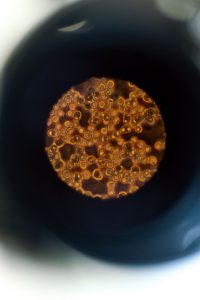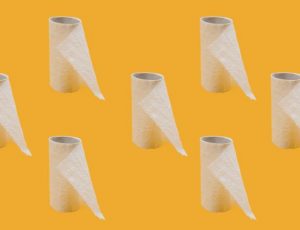Whether or not we like it, COVID-19 has changed our lives. We know, however, that God uses everything for good. One of the good things that has come from this situation is an increased awareness on preventative health and the immune system. People are looking for answers on how not to get sick. The great news is when you focus on prevention and bolstering your immune health, you’re bound to improve many different aspects of your health at the same time.
Before we dive in, I want you to do a little reflection. How are you feeling about our world’s current situation? Do you feel confused, scared, or fearful of what’s going on? Do you have any hope for your health or the things to come? How about your family’s health and wellness?
You do not have to be afraid. God reminds us, time and time again, do not fear. We have been through tough times in the past and we will go through tough times in the future. But what’s worse than the difficulty of the situation itself, is the fear people experience about it. There’s a great quotation (author unknown): “Worrying means you suffer twice.”
One way to mitigate that fear and worry is to learn about how your body actually works when responding to viruses, and how there is hope.
So, let’s look at the different parts of your body’s immune system, how they work, and why you should have hope for staying healthy.
Something to keep in mind when looking at the immune system is that a virus’s main mission is to invade and replicate. Your immune system’s job is to fight against the virus from doing those two things. There are two sides of your immune system that work together to protect you: Non-specific and Adaptive.
The Non-specific Immune System
On the Non-specific side, we start with the barriers: Skin, hair, and mucus. Not many people realize that your immune system technically starts outside of your body. What? How?! Your skin! Skin is a part of your immune system. It is literally the first line of defense when fighting off viruses.
Inside the body
When we move to the inside of the body, we find several more defenses: tissues in your nose, mouth, and throat. The mucus that coats those tissues acts as a sticky ‘trap’ for the virus. Hair also acts as a trap or barrier. Most people are aware that their eye lashes and nose hairs work to protect them. But did you know that you also have hair in your ears, and even hair-like structures in your lungs? Those hair-like structures are called cilia, and they work to help block invaders from getting any further.
But let’s say that rather than inhale something (where it can get caught in the nose hairs or trapped in mucus) you eat something that had a virus on it. It still could get trapped by mucus, but, for the sake of exploring the rest of your body, let’s say it makes it past that barrier, too. The next part of the non-specific immune system is chemical. Your body literally uses chemical warfare against viruses.
Chemical Warfare
One of those chemicals is hydrochloric acid (more commonly known as stomach acid). The main function of the stomach is to break down food we eat so it can be absorbed ‘down the road’, but a side function is to burn up anything that shouldn’t be there.
If we go even further in the digestive system, we have the next line of defense: your gut biome. This is in your small and large intestine, and it is where 80% of your immune system lives. This is where food is absorbed. Your body needs a very strong defense here so that anything that has slipped through so far isn’t absorbed at this point. Normally, when people think of bacteria, they have a negative reaction, but there are a lot of good bacteria that your body needs and a lot of it resides in your gut.
There are some sneaky viruses that do get past all these defenses and get absorbed into the blood stream. But, your body is smart! Your immune system is complex… your body is well-defended. This is where the virus would run into the next line of defense: white blood cells.
White Blood Cells
With white blood cells, we have a fighting system. As with any good army, there are different jobs for each solder (in this case, each cell). The first couple of cells oversee phagocytosis (big fancy word for a cell to eat something whole, digest it, and ‘spit out’ the leftovers). These are your neutrophils and macrophages. When there is an invader, these cells are usually the first to the scene. The neutrophils are the most abundant white blood cell you have, and once they have ingested a foreign invader, they self-destruct. The macrophages, on the other hand, can keep going even after they ingest a virus.
Let’s take it one step further. What happens when a virus actually makes it into a healthy cell? What defense does your body have?
Natural Killer Cells

Once the virus enters a healthy cell, it makes that cell unhealthy. But – don’t fear! The cell then sends out an ‘SOS’… a signal for the Natural Killer cells to come. These cells have one job: kill the cell. It’s called Apoptosis. That’s right. This is a normal thing to take place in your body. If a cell gets too old, doesn’t work right, or becomes unhealthy, the Natural Killer cells pop the outer membrane of the cell and it dies. This allows a newer, healthier cell to take its place, which allows your body to run optimally.
Fevers
I will give one more scenario. What happens when your body becomes over-run by the virus? For example, if the virus multiplied too quick, and there are not enough white blood cells to create a good response? A signal is sent to your pituitary gland to turn up the heat. AKA a fever. By increasing the temperature, the virus struggles to reproduce and survive. Also, with a fever, it increases the metabolism of your cells to heal faster and tells the liver to hold onto the iron and zinc so it doesn’t encourage continued growth of the virus or bacteria.
WOW!!! This is how your body defends itself with a non-specific response which is kind of “generic” for any foreign invader in the body. These responses are for more than just viruses. They can be seen for bacteria, virus, parasites, or even when you get injured and develop a condition. Whenever your body feels under attack, it responds quickly. Now, let’s investigate how your body responds specifically.
The Adaptive Immune System
The other half of your immune system we haven’t covered yet is called your Adaptive Immune System. It is responsible for creating cells that have an exact target. This is where your immune system really gets to shine. The one downside of this half of the immune system is that it takes time for your body. Your body needs to be exposed to invaders to create a specific response. Put simply: your body doesn’t recognize the invader immediately. But oh man, once the body knows what a foreign invader looks like, the body does some amazing things to fight it!
B-Lymphocytes
First, let’s look at the B-Lymphocyte, or B-cell. This cell has antibodies for all different types of foreign invaders on it. It can have up to 10,000 different antibodies on the surface of the cell and each B-cell can have a different set of antibodies on its surface. These B-cells are floating around in your arteries, veins, capillaries, and lymph system to keep a lookout for the foreign invaders that it has antibodies for.
Once a B-cell encounters an invader, the antibody attaches itself, and the invader gets sucked into the B-cell. Then the cell begins to rapidly clone itself. These clones are called Effector Cells and they pump out 10,000 antibodies a second for up to five days. Remember, these antibodies are specific to the invader, and those antibodies seek out the virus and attach itself to it. This does a couple of things for us. First, it will slow the virus down so other macrophages can eat it up. Second, it will bind up the virus’s attachment points so the virus doesn’t have a chance to attach onto a healthy cell and infect it.
T-cells
Next are the T-cells. They are made in the bone marrow and mature in the Thymus which is why they are called T-cells. Similar to the B-cells, one of the T-cells will attach to the invader and then it starts cloning itself and raises the alarm by releasing cytokines which tells other T-cells that something is wrong and for them to start cloning themselves. Which, they then send out more cytokines, which boosts the alarm even more and so on and so on.
During the multiplying/cloning process, your body also makes cells called the Cytotoxic T-cell. These cells are activated by the cytokines that were released by those other T-cells and begin the hunt for cells that have been infected. Typically, when a cell becomes infected, it will put a sign or a signal on itself that will alert the Cytotoxic T-cells that it is infected. The Cytotoxic T-cell will come by, attach to the sign or signal, and pop or inject the infected cell so the invader can no longer multiply.
AND THAT is a quick overview of your immune system. And by quick, I mean very quick. It is far more complex and complicated than a “short blog” like this can give. The immune system blocks, pushes, burns, slows down, eats, digests, attaches, pops, injects, and much more to any invader like viruses, bacteria, fungus, cancers, and injuries that your body may encounter.
All we need to do then, is to take care of our bodies so our bodies can take care of us. So have hope. Your body is not defenseless, and you are not powerless.
If you are looking for more information on how to boost your immune system, check out Valeo’s YouTube channel, other blogs on our website (like this one), and our Facebook page.
To get in touch with us, call our office at 952-949-0676 or fill out the contact form below.
[contact-form-7 id=”433″ title=”Contact form 1″]



